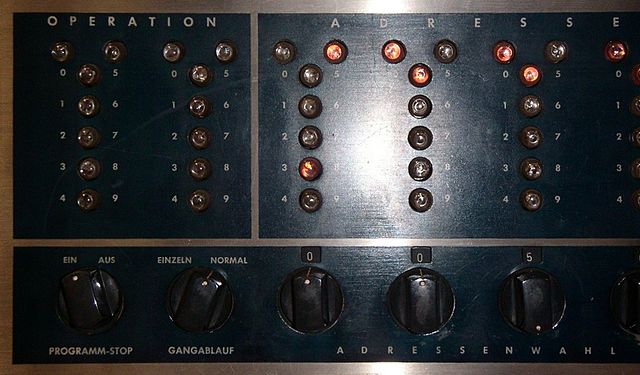An abacus, also called a counting frame, is a hand-operated calculating tool which was used from ancient times in the ancient Near East, Europe, China, and Russia, until the adoption of the Arabic numeral system. An abacus consists of a two-dimensional array of slidable beads. In their earliest designs, the beads could be loose on a flat surface or sliding in grooves. Later the beads were made to slide on rods and built into a frame, allowing faster manipulation.
An early photograph of the Salamis Tablet, 1899. The original is marble and is held by the National Museum of Epigraphy, in Athens.
Copy of a Roman abacus
Russian schoty
Early 20th century abacus used in Danish elementary school.
Bi-quinary coded decimal is a numeral encoding scheme used in many abacuses and in some early computers, including the Colossus. The term bi-quinary indicates that the code comprises both a two-state (bi) and a five-state (quinary) component. The encoding resembles that used by many abacuses, with four beads indicating the five values either from 0 through 4 or from 5 through 9 and another bead indicating which of those ranges.
Japanese abacus. The right side represents 1,234,567,890 in bi-quinary: each column is one digit, with the lower beads representing "ones" and the upper beads "fives".
IBM 650 front panel
Close-up of IBM 650 indicators







